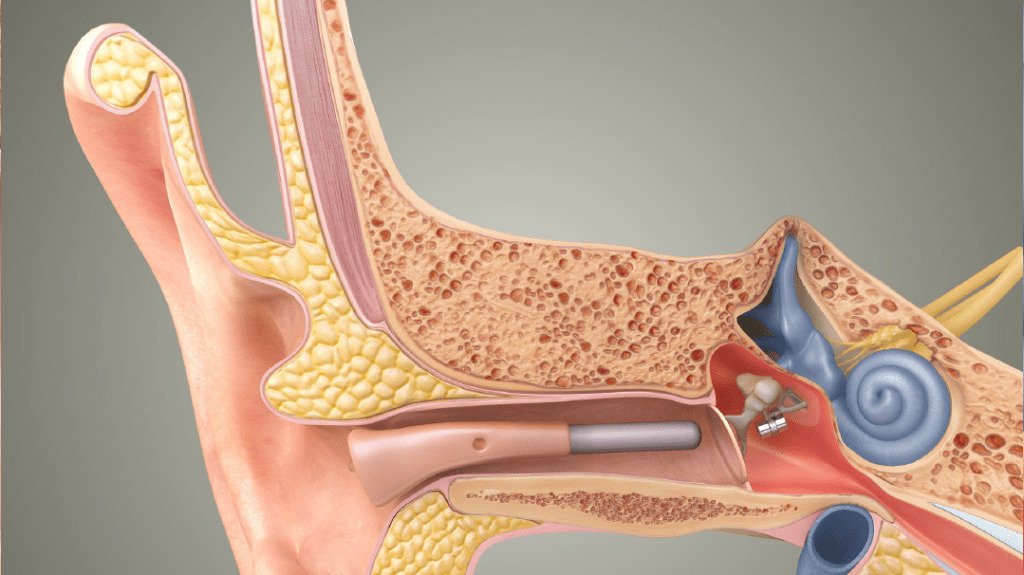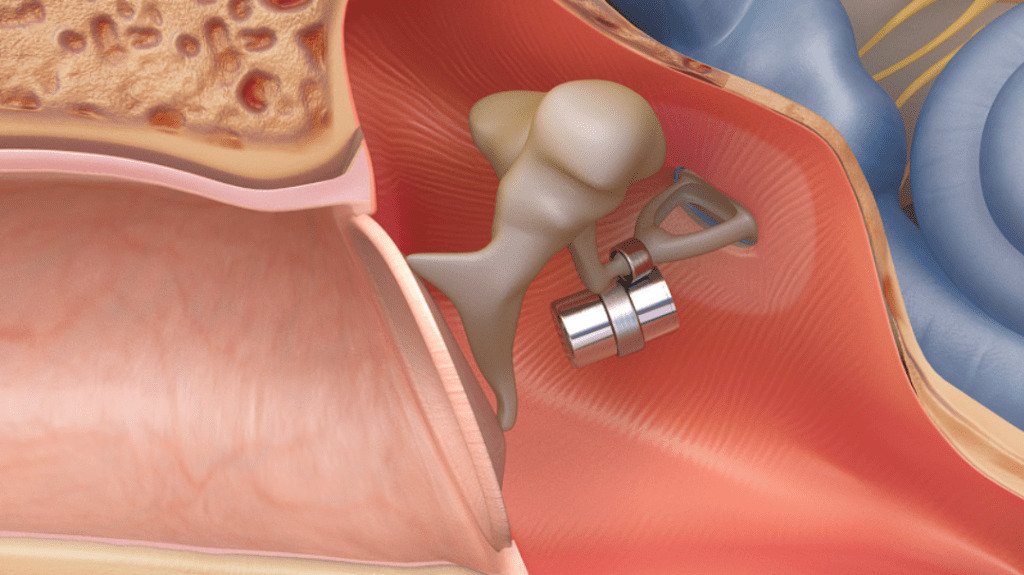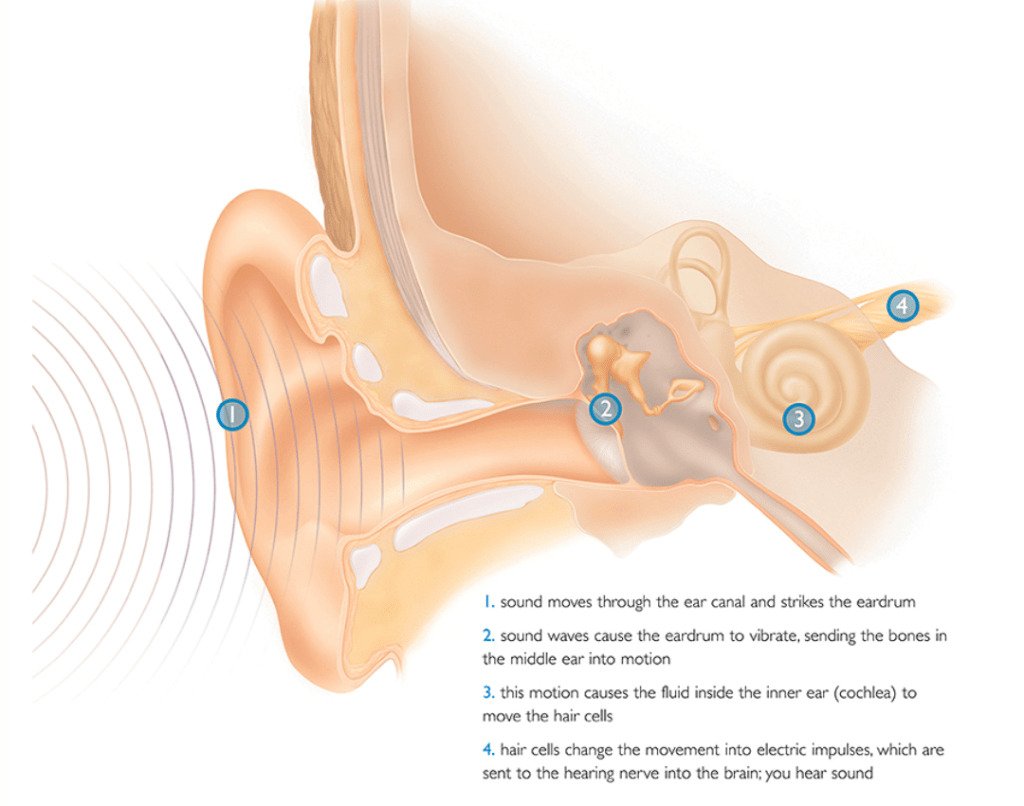How Does the Maxum Middle Ear Implant Work?
This device stimulates the inner ear directly using the patient’s own hearing bones (ossicles). Unlike a hearing aid, this system uses magnetic power to move the hearing bones to allow for improved hearing function. In contrast, a hearing aid uses sound signals to move the eardrum, so it is prone to feedback, which is the squealing sound that hearing aids may make that interferes with hearing function. The Maxum device will never squeal like a hearing aid.
Since there is no feedback issue, the Maxum device can deliver a much louder sound to the inner ear than a hearing aid, so the Maxum can help a lot of patients who are having trouble hearing with hearing aids hear significantly better and clearer. The Maxum device consists of a magnet that is implanted surgically [Fig. 1]. The external portion of the Maxum system is an in the ear canal processor that takes the sound coming into the ear and then moves the middle ear magnet to allow the patient to hear [Fig. 3].

[Fig. 3] Cross section of the Maxum implant and processor. (Courtesy of Ototronix)





